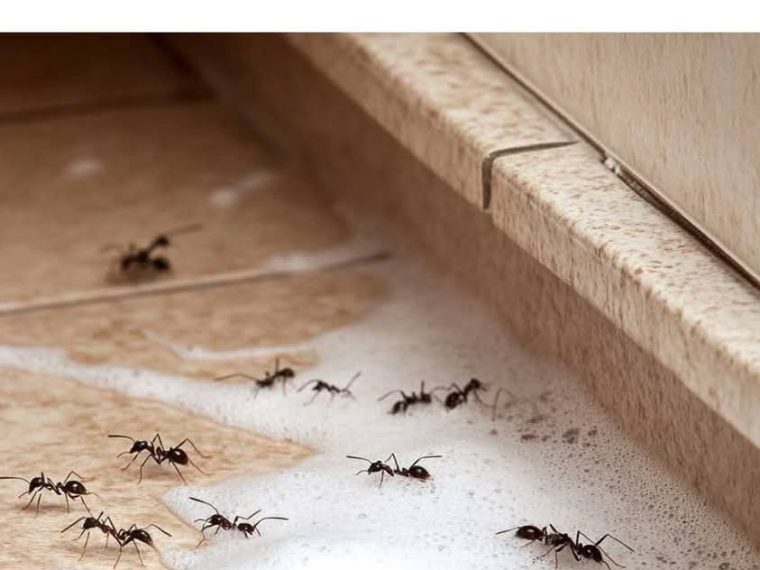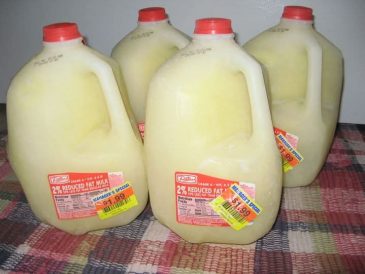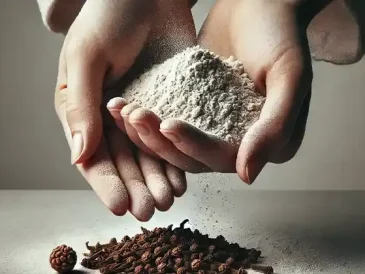Ants can be incredibly frustrating pests to deal with. Whether they’re marching across your kitchen countertops or forming a line into your pantry, these tiny invaders seem to appear out of nowhere and can be surprisingly persistent. While there are many commercial products on the market designed to eliminate ants, many of these contain harsh chemicals that can be harmful to both humans and pets.
Luckily, there is a natural, effective solution that you can easily make at home using just three simple ingredients. Read on to learn how to get rid of ants for good with this natural remedy!
Why Choose a Natural Solution?
Before diving into the recipe, it’s important to understand why a natural ant repellent is a better choice for your home. Commercial ant killers often contain toxic chemicals like fipronil, imidacloprid, and hydramethylnon. While these chemicals are effective in killing ants, they can also pose risks to human health, especially if you have children or pets who are more likely to come into contact with treated surfaces. Additionally, using natural solutions is better for the environment, as it avoids introducing harmful substances into the soil and water systems.
The Power of a 3-Ingredient Solution
This natural ant repellent leverages the power of three common household ingredients: white vinegar, baking soda, and essential oil. Each of these ingredients plays a critical role in repelling ants and ensuring they don’t return.
1. White Vinegar
White vinegar is a natural ant repellent. The strong smell of vinegar disrupts the scent trails that ants use to navigate and communicate. Without these trails, ants become disoriented and unable to find their way back to food sources. Vinegar also has a cleaning effect, which helps remove the pheromones ants leave behind, further deterring them from returning to treated areas.
2. Baking Soda
Baking soda is a fantastic ingredient for ant control because it reacts with the acid in the ant’s digestive system, creating carbon dioxide gas, which ultimately kills the ants. Furthermore, baking soda is a safe and non-toxic alternative to traditional insecticides, making it ideal for households with pets and children. Additionally, baking soda’s abrasive nature can also help remove ants’ scent trails, enhancing the overall effectiveness of the solution.
3. Essential Oil (Peppermint or Tea Tree)
Essential oils like peppermint or tea tree oil are potent natural insect repellents. The strong scents of these oils are highly offensive to ants, making them effective deterrents. Peppermint oil, in particular, contains menthol, which has a cooling effect that ants find intolerable. Tea tree oil has similar properties, and its antiseptic qualities can help clean and disinfect surfaces while repelling ants.
How to Make the 3-Ingredient Ant Repellent Solution
Now that you know why these ingredients are effective, let’s get into how to make this simple yet powerful ant-repellent solution.
Ingredients:
1 cup of white vinegar
1 tablespoon of baking soda
10-15 drops of peppermint or tea tree essential oil
Instructions:
Prepare the Solution:
Start by mixing the white vinegar and essential oil in a spray bottle. Make sure the bottle is clean and has a good spray nozzle, as you’ll want to apply the solution evenly over affected areas.
Add Baking Soda:
Carefully add the baking soda to the spray bottle. Be mindful that vinegar and baking soda react to produce carbon dioxide gas, which can cause bubbling and fizzing. To prevent overflow, add the baking soda slowly and mix gently.
Shake Well:
Once all ingredients are combined, close the spray bottle and shake it well to ensure everything is mixed properly.
Apply the Solution:
Spray the solution generously on areas where you’ve seen ants, including entry points like doorways, windowsills, and cracks. Make sure to also spray areas where ants have been seen frequently, such as kitchen counters, around sinks, and along baseboards.
Reapply as Needed:
This natural solution will not kill ants on contact like chemical sprays, so it’s essential to reapply the mixture daily for at least a week to disrupt the ants’ trail and deter them from returning.
Additional Tips for Ant Prevention
While this natural solution is highly effective in repelling ants, there are a few additional steps you can take to prevent future infestations:
Keep Your Home Clean: Regularly clean your kitchen and dining areas to remove food crumbs and spills, which can attract ants.
Seal Entry Points: Inspect your home for potential entry points, such as cracks in windows, doors, and walls, and seal them with caulk or weatherstripping.
Store Food Properly: Keep food in airtight containers, especially sweets and grains, to prevent ants from finding easy sources of food.
Take Out the Trash Regularly: Ensure your trash bins are sealed and emptied regularly, as the scent of garbage can attract ants.
Getting rid of ants doesn’t have to involve toxic chemicals or expensive pest control services. With just three simple, natural ingredients—white vinegar, baking soda, and essential oil—you can create an effective ant repellent that’s safe for your family, pets, and the environment. By combining this solution with good home hygiene practices, you can keep those pesky ants away for good. So, the next time you see a trail of ants marching through your home, reach for this natural remedy and reclaim your space!
Title: How to Deep-Clean Your Toilet with an Unexpected Household Staple
Introduction:
When it comes to cleaning the toilet, many of us turn to harsh chemicals that promise quick results. But what if there was a gentler, more effective way to keep your toilet sparkling clean—using an ingredient you already have in your pantry? In this guide, we’ll reveal a surprising yet powerful cleaning agent that not only tackles stains and odors but also helps maintain your toilet’s pristine condition without relying on traditional chemical cleaners.
Ingredients:
- Baking soda
- White vinegar
- A toilet brush
- A microfiber cloth
- Lemon juice (optional for a refreshing scent)
Preparation:
- Turn off the Water Supply (Optional): If you’re planning a deep clean, shutting off the water supply allows the cleaning solution to sit undisturbed for longer. However, this step isn’t strictly necessary for regular maintenance.
- Sprinkle Baking Soda: Generously sprinkle baking soda around the inside of the toilet bowl. Pay special attention to areas with visible stains.
- Add White Vinegar: Slowly pour white vinegar into the bowl. As it reacts with the baking soda, it will fizz, helping to lift stains and eliminate odors.
- Let it Sit: Allow the mixture to work its magic for at least 10–15 minutes. For tougher stains, let it sit for up to an hour.
- Scrub and Rinse: Using a toilet brush, scrub the bowl thoroughly, ensuring you reach under the rim and around the waterline. Once cleaned, flush the toilet to rinse away any remaining solution.
- Optional Lemon Juice Finish: For a fresh, citrusy scent, add a few drops of lemon juice and give the bowl a quick rinse with a sponge or cloth.
Serving and Storage Tips:
- Keep a jar of baking soda and a spray bottle of vinegar in your bathroom cleaning caddy for easy access.
- Store the cleaning supplies in a cool, dry place.
- Consider placing a small container of baking soda near the toilet to absorb odors between cleanings.
Variants:
- For Stubborn Stains: Add a few drops of dish soap to the vinegar before pouring it into the toilet bowl. The soap helps break down oils and grime for a more effective clean.
- For Mineral Deposits: If you have hard water stains, try adding a small amount of citric acid powder or lemon juice to the mix. These acids help dissolve mineral deposits more quickly.
- For a Fresh Scent: Mix a few drops of essential oil (like tea tree or lavender) with the vinegar before use to leave a pleasant aroma.
FAQ:
Q: Is this method safe for septic systems?
A: Yes, baking soda and vinegar are both septic-safe and can actually help maintain a healthy balance in your septic system.
Q: How often should I use this cleaning method?
A: For routine maintenance, use it once a week. For deep cleaning, repeat once a month or as needed.
Q: Will this method remove hard water stains?
A: It’s effective on most stains, but particularly tough mineral deposits may require additional scrubbing or multiple applications.
Q: Can I use this on other bathroom fixtures?
A: Absolutely! The baking soda and vinegar combination works well on sinks, shower tiles, and even drains.





